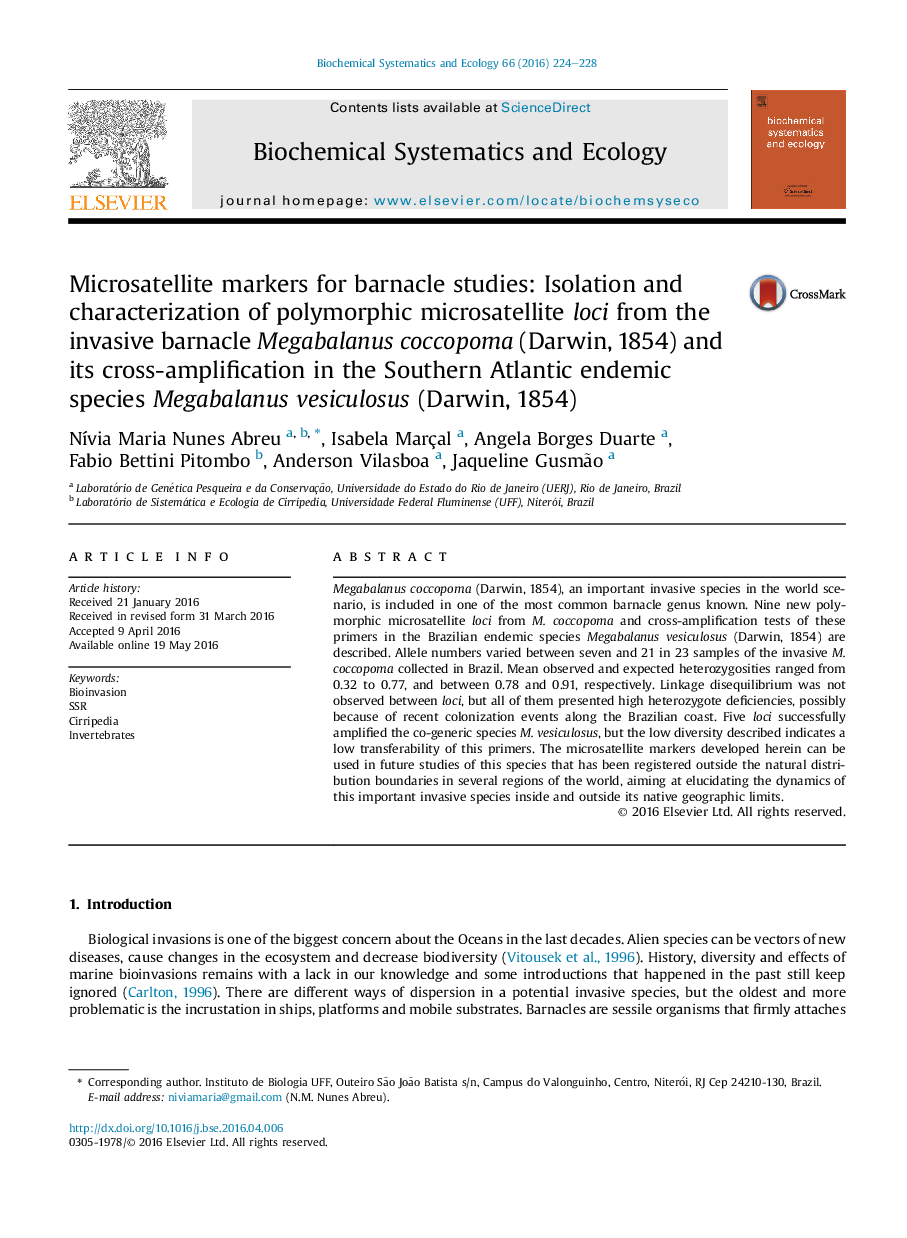| Article ID | Journal | Published Year | Pages | File Type |
|---|---|---|---|---|
| 1353760 | Biochemical Systematics and Ecology | 2016 | 5 Pages |
•Nine new polymorphic microsatellite loci from Megabalanus coccopoma.•Cross-amplification tests of these primers in Megabalanus vesiculosus.•Diagnostic loci for molecular discrimination between species.•Microsatellite can elucidate the dynamics of the invasive species M. coccopoma.
Megabalanus coccopoma (Darwin, 1854), an important invasive species in the world scenario, is included in one of the most common barnacle genus known. Nine new polymorphic microsatellite loci from M. coccopoma and cross-amplification tests of these primers in the Brazilian endemic species Megabalanus vesiculosus (Darwin, 1854) are described. Allele numbers varied between seven and 21 in 23 samples of the invasive M. coccopoma collected in Brazil. Mean observed and expected heterozygosities ranged from 0.32 to 0.77, and between 0.78 and 0.91, respectively. Linkage disequilibrium was not observed between loci, but all of them presented high heterozygote deficiencies, possibly because of recent colonization events along the Brazilian coast. Five loci successfully amplified the co-generic species M. vesiculosus, but the low diversity described indicates a low transferability of this primers. The microsatellite markers developed herein can be used in future studies of this species that has been registered outside the natural distribution boundaries in several regions of the world, aiming at elucidating the dynamics of this important invasive species inside and outside its native geographic limits.
